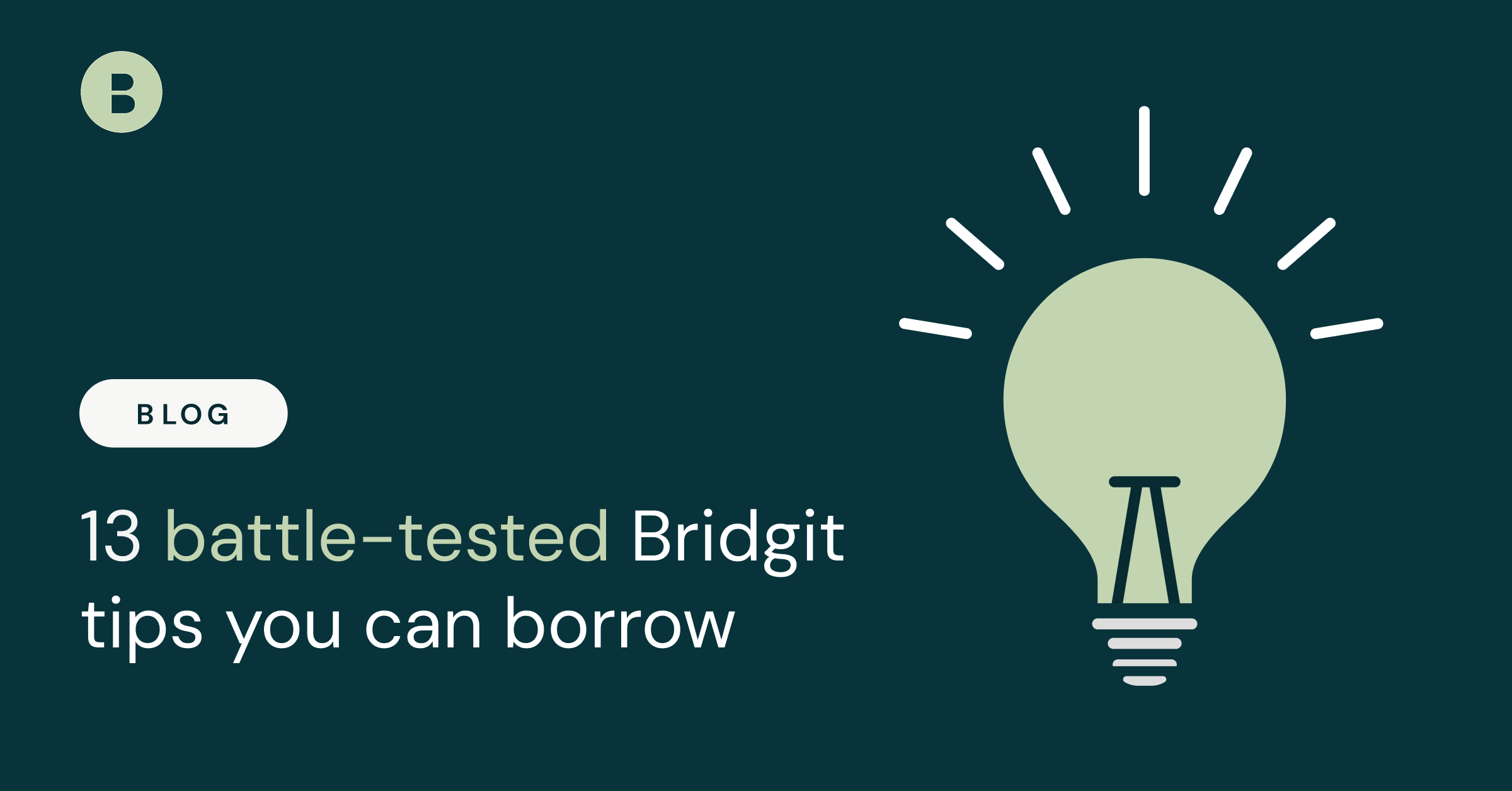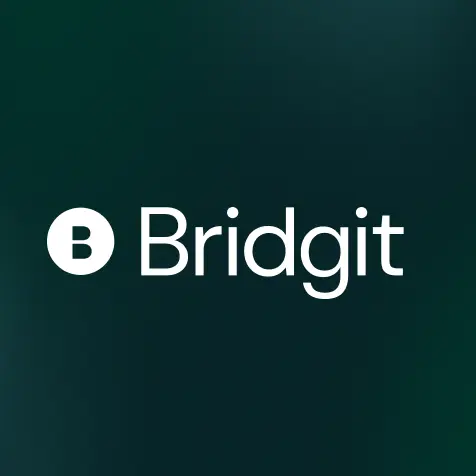Borrow these 13 battle-tested Bridgit tips
When Stephen Barnett joined Sitzler as senior business analyst, he inherited a familiar challenge for most construction firms—managing 250+ team members across a vast geographical area using nothing more than spreadsheets (and hope).
Table of Contents
Six months later, his systematic approach to implementing Bridgit delivered a complete transformation of how they approach workforce planning.
Stephen’s journey reveals something important: Success requires out-of-the-box thinking and persistence. He recently discussed the most helpful things he’s learned while developing a winning workforce planning strategy, and we’re passing them on so you can incorporate his tips into your own approach!
Foundation: Building strategic capabilities
1. Secure executive buy-in through value demonstration
The biggest barrier to a successful workforce planning implementation isn’t typically technical—it’s cultural. Stephen learned that persistence, combined with strategic communication, pays dividends: “That whole change piece… just being resilient and consistent and sticking to it. Once the value of the tool and the information starts getting out, the journey becomes a lot easier.”
Strategic leaders recognize that change management begins with executive involvement from day one. Stephen’s approach of involving leaders in vendor discussions, and having Bridgit’s account executive present directly to leadership, built credibility from the get-go.
Getting approval represents only the first step. The real goal involves creating champions who understand the strategic value of workforce planning transformation.
2. Leverage support to gain a competitive advantage
Organizations that are most successful at implementing new technology recognize they don’t need to solve every challenge alone. Stephen emphasized that “the Bridgit help and support features are super helpful,” including in-app resources and ticketing systems. His philosophy: “Don’t be scared to escalate a query or a concern.”
Companies that view vendor relationships as strategic partnerships rather than transactional arrangements consistently achieve better outcomes. The fast turnaround time Stephen experienced became a competitive advantage for maintaining momentum.
3. Use account teams as strategic advisors
Stephen treated the Bridgit account executive he worked with as an implementation ally. By inviting the account team to present directly to construction leads, he provided executives with “a real feel very early about what [Bridgit] could deliver.”
This external validation process carries weight that internal presentations often lack, creating buy-in that accelerates adoption across the organization.
Training: Building organizational capability
4. Design role-based training for maximum impact
Generic training often fails because it treats all users as identical. Stephen’s breakthrough came from customizing training “to align with the permission groups of the groups of people that are going to be using Bridgit.”
His recommendation: record training sessions to create a library of role-specific content. “When a new person comes on board, we provide them access depending on their permissions level, and I simply share that training session.” This approach scales expertise across the organization while reducing ongoing training costs.
5. Build administrative resilience
“Appoint at least two administrators to the system, particularly if you’re diverse across the country—you’ve got that fallback in case of leave,” Stephen recommends. Coverage represents one benefit, but the deeper value comes from recognizing that initial implementation requires significant administrative capacity.
Organizations that plan for the in-depth data cleanup and user onboarding phases position themselves for smoother transitions and faster value realization.
Creating competitive intelligence with data
6. Activate experience tracking for long-term advantages
Stephen calls experience tracking a “game-changer” that “captures real-time staff experiences based on the project that they’re at and will pick up all the data points against that person’s specific profile automatically.”
The strategic insight here extends beyond convenience. As this experience data accumulates, it creates a competitive moat—deep institutional knowledge about team member capabilities, project experiences, and optimal team compositions that become increasingly valuable over time.
7. Embrace historical data collection as a strategic investment
While experience tracking captures future data automatically, historical data requires significant effort. Stephen’s team tackled this by creating “a customized template” to collect the data that aligned with Bridgit.
Organizations that view this as a strategic investment rather than an operational burden position themselves with richer baseline data for better decision-making from day one.
8. Standardize project roles for strategic clarity
One of Stephen’s most impactful early decisions was simplifying project roles. “We found we had many project roles that were essentially the same thing but called something slightly different, so we rationalized down—probably cut out 90-odd project roles.”
This seemingly tactical decision has strategic implications: standardized roles enable easier cross-project comparisons, improve resource allocation decisions, and create consistent organizational language around capabilities.
9. Balance transparency with adoption
While Bridgit can handle detailed pay information, Stephen chose a different approach: “What I’ve gone with is generic charge-out rates.” His reasoning was strategic—detailed pay information can lead to concerns among users—especially as they are still getting acclimated to a new system.
This demonstrates sophisticated change management thinking: prioritizing adoption over theoretical completeness, recognizing that strong cost estimation is possible without creating adoption barriers.
Integration: Building connected systems
10. Pursue automated data flows for operational excellence
Stephen’s team recently completed a Bridgit/payroll integration that demonstrates the power of connected systems. “We’ve just pushed through an integration with our payroll system… we’ve now automated a lot of the mundane manual work that was required previously.”
The integration handles onboarding automatically, recognizing when HR identifies someone whose position relates to project work and seamlessly bringing that profile into Bridgit. This level of system integration represents the future of construction operations—connected, automated, and efficient.
11. Design intelligent position mapping
Stephen’s HR integration includes intelligent position matching that recognizes which roles should be included in Bridgit: “If we get a new person to come in and their role is a project engineer, it will seamlessly identify that.”
This demonstrates strategic thinking around system boundaries. The right people need to be in the right systems automatically, while maintaining clear boundaries about who belongs where.
Continuous improvement: Future-proofing your investment
12. Create feedback loops for platform evolution
Stephen’s approach focuses on partnership: “Feedback and suggestions for improvement is something we’ve been fairly big on.”
He looks for improvements “not just for Sitzler but broadly for your user base,” creating a collaborative relationship that enhances the platform for all of Bridgit’s customers. This mindset—viewing platform evolution as a shared responsibility—characterizes organizations that maximize their technology investments.
13. Think beyond implementation to strategic evolution
Stephen’s most strategic insight: “I don’t see it’s we’ve delivered, we’re done, we can move on. I think there will be ongoing assessment as to how we could add further value.”
Implementation represents only the beginning. The construction industry’s complexity demands sophisticated workforce planning tools, but success comes from viewing your platform as an evolving strategic asset.
The future of construction workforce planning
Stephen’s journey at Sitzler represents a blueprint for how construction companies can transform workforce planning from a reactive, administrative function into a proactive, strategic capability.
The 13 strategic tips shared in this post offer a proven roadmap for this transformation. Stephen’s experience proves that with the right approach, construction companies can turn workforce planning from a liability into a competitive advantage.


